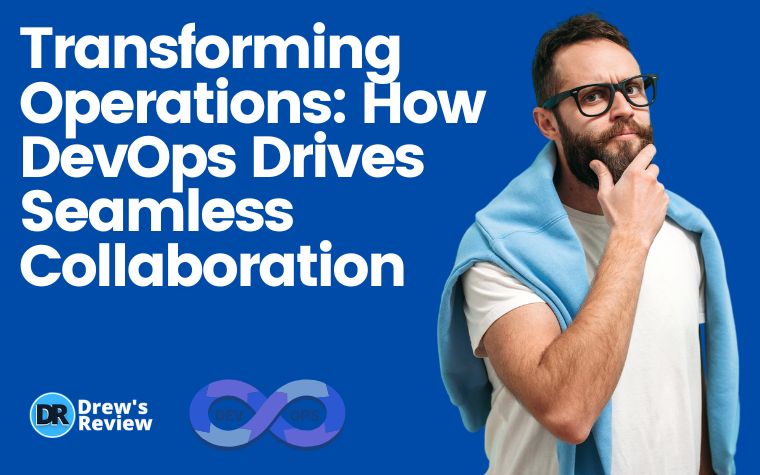
We’ve all seen it, or maybe even lived it: the classic workplace standoff. The development team, celebrated for building new features at lightning speed, tosses a completed piece of code over the proverbial wall.
It lands with a thud on the operations team’s desk, who are the ones responsible for keeping the website stable and the servers running. Their job is to say no to risky changes. The result? Frustration, finger-pointing, delayed releases, and a product that ultimately suffers.
For years, this mentality was the unfortunate norm in software creation. But a fundamental shift has been changing the game, a cultural and professional movement known as DevOps.
At its heart, DevOps isn't just about fancy new tools; it's about tearing down those walls and fostering a culture of seamless collaboration between all the people who build, ship, and run software.
More Than Tools: The Cultural Heart of DevOps
If you think DevOps is just a checklist of software like Jenkins, Docker, and Kubernetes, you're missing the point. Those are the enablers, but the true transformation is cultural. It’s a shift from the mindset of my department to our product.
This new philosophy is built on a few core principles:
Shared Responsibility: Developers don’t just write code; they share the burden of its performance and stability in production. Operations staff aren’t just gatekeepers; they are involved early in the process to provide insights on deployability and monitoring. Everyone owns the application from conception to retirement.
Blameless Post-Mortems: When something breaks, the goal isn't to find a scapegoat. Instead, teams conduct blameless retrospectives to understand the why behind the failure. Was the process flawed? Was there an unforeseen dependency? This creates psychological safety and turns incidents into learning opportunities for everyone.
Goal Alignment: Both teams are measured by shared, business-oriented goals. Instead of developers being rewarded solely for feature count and ops for 100% uptime (goals that often conflict), both are incentivized by metrics like feature stability, user satisfaction, and deployment frequency.

Infrastructure as Code (IaC): Speaking the Same Language
Imagine if the network, servers, and databases your application runs on could be defined in the same way as your application code. That’s Infrastructure as Code. Instead of ops manually configuring servers, they write definition files (using tools like Terraform or Ansible) that are stored, versioned, and reviewed in the same repository as the application code.
This is a collaboration powerhouse:
Developers can spin up identical environments in minutes, eliminating the but it worked on my machine problem.
Operations can enforce security and compliance standards directly within the code.
Everyone can review, comment on, and approve infrastructure changes through the same familiar code review process. This is where the concept of DevOps consulting for scale-ups becomes critical.
As a company grows, manual processes break down. Expert guidance can help these fast-moving teams implement IaC and CI/CD correctly from the start, building a scalable and collaborative foundation rather than a legacy of technical debt.
The Engine Room: Practices That Make Collaboration Concrete
A great culture needs practical processes to bring it to life. DevOps introduces key practices that force collaboration to happen naturally, every single day.
CI/CD: The Collaboration Lifeline
The Continuous Integration and Continuous Delivery (CI/CD) pipeline is the central nervous system of a DevOps environment. It automates the process of integrating code changes, testing them, and preparing them for release.
Pipeline stage | Collaborative action |
Code commit | A developer pushes code, triggering the pipeline automatically. |
Automated build and test | The system builds the application and runs a battery of tests, giving immediate feedback to the developer. |
Staging deployment | The build is deployed to a production-like environment where developers and ops can validate it together. |
Production release | The change is deployed to users, often in small, safe batches. |
This automated workflow creates a single source of truth. There’s no debate over what code is in production; the pipeline dictates it. It turns a handoff from a dramatic, high-stakes event into a calm, continuous, and transparent flow.
The Payoff: What You Gain When Teams Unite
When collaboration becomes the default, the business benefits are profound and tangible.
Speed and Market Agility: Releases that used to take months can happen in days or hours. This allows businesses to experiment, adapt, and respond to customer feedback with incredible speed.
Enhanced Reliability: With shared monitoring tools and collaborative on-call rotations, issues are detected and resolved faster. The system's stability improves because quality is built in at every stage, rather than being inspected at the end.
Happier, More Engaged Teams: The toxic us vs. them dynamic evaporates. Engineers spend less time in stressful firefights and bureaucratic handoffs and more time doing meaningful, creative work that directly impacts customers.

Conclusion
Ultimately, DevOps proves that the whole is greater than the sum of its parts. By breaking down silos and fostering a culture of shared ownership, it not only transforms operations but also transforms the entire organization into a more resilient, innovative, and unified entity.
It’s the recognition that building great software is a team sport, and everyone is on the same team.
- GPT Creator Club Review 2025: Is It Worth It? Honest Breakdown - November 7, 2025
- Driving Business Efficiency Through Better Team Communication - November 6, 2025
- Transforming Operations: How DevOps Drives Seamless Collaboration - November 5, 2025
